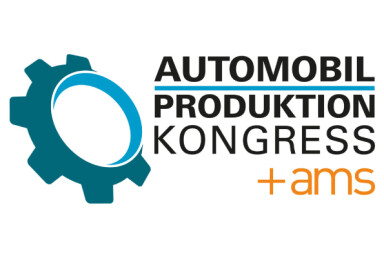AR-VR production boosters
AR and VR boosting production planning and performance

From Ford and Volkswagen to BMW, Hyundai, Bosch, and ZF, Augmented Reality and Virtual Reality tools are becoming key to a faster, safer, more connected production environment.
Production lines are becoming more demanding with faster vehicle platform changes, EV programs bringing new process risks and complex automation requirements. This is stretching workforce skills driving the need for cleaner communication between digital systems, physical operations, and the people who run both, at the plant level.
This is the environment in which Augmented Reality (AR) and Virtual Reality (VR) have moved from interesting experiments to practical, high-impact tools. Across OEMs and tier suppliers, AR and VR now support training, maintenance, robot planning, assembly guidance, safety routines, and layout design. These tools connect workers to information at the right moment and help engineers understand problems long before they appear on the line.
Workers can see torque values or orientation cues right in front of them. This is especially valuable on high-mix lines where a station may handle several vehicle variants
AR and VR becoming key to automotive operations
AR and VR first appeared in styling studios and prototype labs. VR caves helped design teams review vehicle surfaces. AR overlays helped engineers check part alignment. But adoption was slow because the hardware was heavy and the software limited. That changed with three important developments:
1. Plants built high-fidelity digital twins. Every asset, process, and layout became digitally modelled. This created the foundation for immersive interaction.
2. More automation appeared on the floor. Collaborative robots, AMRs, smart torque tools, and vision systems created new coordination challenges. Plants needed more intuitive ways to manage them.
3. Workforce pressures increased. As experienced workers retired and product complexity rose, management needed faster training and clearer support tools.
AR and VR fit these needs because they show the right data at the right moment, in a format people understand instantly. At the same time, they give engineers a safe space to test automation, simulate build steps, and optimise layouts before wasting time and money on physical changes. Optimising day-to-day human and automated work AR overlays digital information onto real workspaces through tablets, smart glasses, or head-mounted displays. In an automotive plant, this produces several clear benefits. Supporting guided assembly and error reduction, AR highlights exact fastening points, shows step sequences, and verifies part selection. Workers can see torque values or orientation cues right in front of them. This is especially valuable on high-mix lines where a station may handle several vehicle variants.
For automated operations, AR ensures clean handoffs. When a robot performs part of a task and a person completes the next step, workers see exactly what to check before proceeding.
Digital tools are proving highly valuable in the areas of maintenance and troubleshooting. AR shortens downtime by exposing hidden information directly on machines. Technicians can scan a robot cell, conveyor, or press and immediately see:
- Fault codes
- Wiring paths
- Live sensor data
- Last maintenance date
- Safety lockout points
It also enables remote specialists to join through the same platform and guide local teams step by step, reducing the need for on-site visits.
Safety and ergonomics support can also be delivered through AR projected safe zones, robot paths, AMR travel lanes, and caution areas in real space. This builds trust in automation and helps new operators adjust faster. Ergonomics teams also use AR to identify posture risks and repetitive motion hotspots on the line.
VR can take workers and engineers into a fully simulated factory environment. This supports planning, risk reduction, and knowledge transfer at a level difficult to match with drawings or static CAD
With production flexibility a high priority, faster changeover and variant management are important factors in daily manufacturing operations. When a line switches to a new model or variant, AR shows operators the updated sequence. It also verifies the correct parts, tools, and fixtures. This reduces rework and keeps cycle times stable.
Strengthening engineering, training, and automation development
With 3D scanning being more widely employed and digital twin development and builds advancing, VR can take workers and engineers into a fully simulated factory environment. This supports planning, risk reduction, and knowledge transfer at a level difficult to match with drawings or static CAD.
VR allows teams to walk through factories and the production lines before the physical installation, and this is invaluable in the planning phase. Using this tool teams can evaluate important operational details such as robot reach zones, space for fixtures and operators, material flow, vision system placement, safety guarding and Ergonomic load on workers. Multiple concepts can be tested in hours. Mistakes that once cost weeks of rework are avoided early.
Robotics engineers can use VR simulation to check collisions, cycle times, blind spots, and tool interference. This helps teams tune programs and changeovers before any real robot is powered up. It can also enable new operators to practice emergency stops, battery handling, torque sequences, or high-voltage routines in a safe environment. Workers gain confidence and muscle memory fast because the training feels real.
Upstream in the product development phase, VR reviews help manufacturing engineers and product designers understand how part complexity affects assembly. They can evaluate connector access, fastener alignment, and ergonomics early in the design cycle, reducing costly late changes.
Used in full VR factory planning, BMW imports plant-wide digital twins into VR. Engineers walk future lines, check robot paths, assess ergonomics, and test AMR traffic
OEMs and tier suppliers expand the use of AR and VR
Theses technologies have been used by vehicle makers and component and system producers for some time, but they are now being actively deployed across the value chain from product development, engineering and production phases to virtual factory planning, process validation, and work force training.
Ford is one of the longest-standing automotive users of VR, but the recent shift has expanded its use deep into manufacturing. Employing VR for early process validation, manufacturing engineers load full vehicle CAD models and future workstations into a VR environment. They check reach, tool access, clearance, ergonomic load, and station flow long before physical prototypes exist. Ford has reported:
- Fewer late design changes
- Reduced need for physical mock-ups
- Faster cross-functional alignment between design and manufacturing
VR training is also being used for launch teams across the OEM’s global network. Instead of flying hundreds of people to training centres, Ford uses shared VR spaces where trainers and learners interact with the same virtual car. Operators rehearse sequences for wiring, cockpit assembly, interior fitment, and final trim.
Ford is using AR support for maintenance and debugging. Technicians use AR devices to visualise wiring diagrams, PLC I/O states, and robot diagnostics right on the machine. Remote specialists can support teams instantly. Ford says it expects this to become a standard tool linked to MES and IoT data feeds.
Volkswagen: AR-driven maintenance and remote collaboration
Volkswagen, Audi, and Porsche plants deploy AR to support maintenance, battery assembly, and worker training. Technicians wear smart glasses that stream their view to central experts. These experts draw guidance directly onto the technician’s display, highlighting connectors, showing exact bolts or fuses, indicating measurement points, guiding robot resets. This has reduced downtime and improved consistency across global plants.
AR is being used for battery assembly at Audi’s plants. Battery module assembly requires precise orientation and strict safety checks. AR guides workers through, cell placement, connector routing, polarity confirmation and bolt sequences. Pilot data showed fewer mistakes from new workers and faster task learning. VW also embeds AR instructions into daily routines for lubrication, inspection, tool settings, and lockout-tagout procedures. It reduces human error and improves documentation quality.
BMW: Mixed reality for layout planning, logistics, and variant complexity
BMW uses both AR and VR extensively. Their digital factory program treats immersive tools as part of normal engineering workflow.
Used in full VR factory planning, BMW imports plant-wide digital twins into VR. Engineers walk future lines, check robot paths, assess ergonomics, and test AMR traffic. This reduces layout conflicts and shortens planning cycles. There is also an AR for variant-specific assembly guidance. With large configuration diversity, BMW uses AR to highlight the correct part, fastening point, or cable route based on the scanned VIN. This reduces rework in stations dealing with engine, wiring, and interior variants. AR helps logistics teams simulate packaging layouts, kit containers, and part placement. This reduces material waste and speeds up planning for new programs.
Hyundai: VR robotics simulation and AR equipment setup
Hyundai leverages immersive technology in several engineering workflows. Hyundai uses VR to test robot reach, cycle time, and worker interaction zones before installation. Engineers also simulate maintenance access and vision camera positions. During automation installation, AR overlays show correct robot base positions, sensor alignment, and fixture placement, reducing commissioning errors. Workers train for high-voltage systems, large robot interaction, emergency stops, and hazard recognition in VR. This results in higher awareness and fewer errors during ramp-up.
Bosch: AR assembly support, VR layout planning, and connected maintenance
Bosch integrates immersive tools into several production scenarios. AR assembly guidance in electronics and hydraulics supports pperators assembling ECUs, ABS modules, and hydraulic components. This highlights correct part placement, flags incorrect combinations, shows torque values and confirms sequence steps, shortening training time and improving first-time-right rates.
Another application for VR is the integration of multi-vendor equipment. Bosch uses VR to simulate full production cells, especially those involving multiple robots or complex conveyor systems. Teams check collisions, access, control panel placement, and ergonomics.
ZF: VR high-voltage training, AR maintenance, and global knowledge transfer
ZF uses immersive tools to support the shift toward electric mobility. For high-voltage module training workers rehearse assembly, disassembly, connector handling, insulation checks, and safety steps in VR. This reduces risk when they transition to live components.
Reducing down time, on the machining lines, ZF machining plants use AR for identifying tool wear, lubrication points, and alignment checks. It cuts maintenance time and prevents common errors.
Virtual tools delivering real results
Immersive tools succeed because they strengthen the pillars of digital production. AR and VR can provide clear communication resulting in a more stable, flexible and people-centred production system. And with developments in lighter hardware, higher resolution, and deeper AI integration on the horizon, AR and VR technologies look continue the move from isolated pilots to standard tools.










